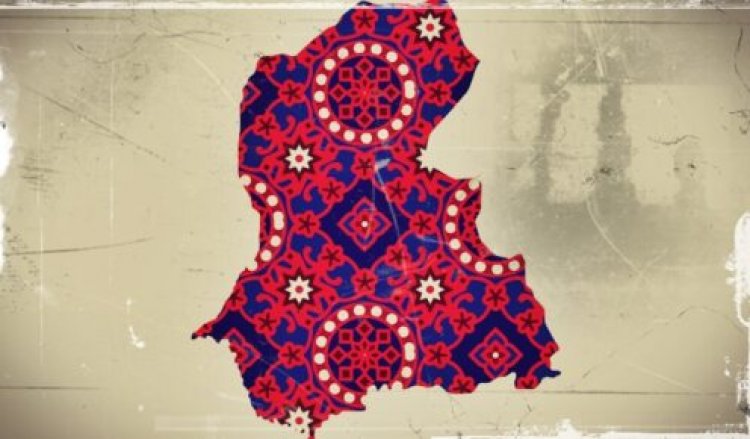Restoring Sindh’s Lost Glory: Need For New Law To Protect Sindh’s Cultural Heritage

Sindh is a place of ancient cultural heritage. In terms of its cultural legacy, it is one of the richest and most diverse provinces of Pakistan (and probably of the world). This place has always been the center of attention for history buffs, lovers of art and architecture and young souls wanting to learn more about the province’s rich cultural and architectural heritage. The beauty and charm of the province may have dramatically faded over the years but people have still not stopped admiring old Sindh.
Very few would be aware that there exists a law regulating the preservation of cultural heritage in Sindh. The implementation of this law is even more inconspicuous. Preservation of cultural heritage in the province is regulated by the Sindh Cultural Heritage (Preservation) Act 1994. Despite an Advisory Committee and a Technical Committee (a sub-committee working under the Advisory Committee) established under this Act, the provincial government has failed to get its job done over the years.
After the Eighteenth Amendment to the Constitution of Pakistan, heritage management became the responsibility of provincial governments. Before the Amendment, the matter of antiquities was dealt with by federal legislation, specifically the Antiquities Act 1975. The Sindh Cultural Heritage (Preservation) Act 1994 and the Antiquities Act 1975 do have some similarities, but the Sindh’s 1994 Act lacks a detailed definition for cultural property like the one included in the Antiquities Act 1975. It also fails to specifically mention the urban areas or historic districts that fall within its scope, despite being enacted much later than the Antiquities Act.
The Sindh Cultural Heritage (Preservation) Act 1994 primarily deals with heritage buildings, but cultural heritage is much more complicated than that. Antiquities are a significant component of cultural heritage but there are no detailed provisions in the Act that deal with them. The use of just the word ‘OBJECT’ to describe antiquities in the Act makes interpretation difficult and leaves the reader with nothing but ambiguity.
Due to the absence of any law specifically dealing with antiquities in Sindh, fraud can be easily committed by selling replicas of antiques and objects disguised as originals. Moreover, private persons are free to carry out excavations at historical sites and run ‘replica’ businesses.
Cultural heritage comprises both tangible and intangible elements. Sindh has been blessed with magnificent intangible cultural heritage in the form of customs, literature, language and music, etc. However, the existing law does not distinguish between these two elements and only deals with tangible cultural heritage, ignoring intangible cultural heritage altogether. The law on intangible cultural heritage has, unfortunately, never been enacted and developed.
Pakistan ratified the UNESCO Convention for the Safeguarding of the Intangible Cultural Heritage in 2005. After the Eighteenth Amendment, cultural subjects had been devolved to the provinces but there was still a need to develop some mechanism to deal with the matter at the federal level. In that regard, the National History and Literary Heritage Division was created under the Ministry of Information to ensure that the federal government fulfilled its international obligations and commitments.
The objective of safeguarding intangible cultural heritage cannot be achieved without the active involvement and participation of provincial governments after the Eighteenth Amendment. Therefore, provincial governments must enact laws dealing with this matter and work with the federal government towards achieving this objective.
In 2018, the suri jajek practice of the Kalasha people in Pakistan was approved by UNESCO to be included in the list of Intangible Cultural Heritage. It was the result of joint efforts of the federal government, provincial government of Khyber Pakhtunkhwa and local NGOs. The Sindh government still lags behind in participation towards safeguarding its intangible cultural heritage, despite being quite rich with it.
The shortcomings of the Sindh Cultural Heritage (Preservation) Act 1994 highlight the dire need for a new law to be enacted on this issue, one that will repeal the existing one. Inspiration should be taken from other provinces, such as Punjab and Khyber Pakhtunkhwa, which have already passed laws on this matter.
There is now a glimmer of hope for the lost glory of this province as the draft for a new law has been completed by Sindh’s Provincial Assembly. The Sindh government’s efforts must be appreciated as it has attempted to cover almost every aspect of cultural heritage in this new law which aims to promote, preserve and protect Sindh’s cultural heritage.
This law defines “antiquities”, “cultural property” and “physical heritage” separately, making interpretation and implementation more practical. The definition of “antiquities” under this draft includes craft, custom, literature and morals, which to some extent brings the element of intangible cultural heritage within its ambit.
This draft also imposes duties (although not enforceable) on every citizen of Pakistan, every person present in Sindh, and on the Sindh government to protect and conserve the heritage of this province.
Furthermore, new entities are to be established under the new law to ensure that the law’s purpose and objective are achieved effectively. An Antiquities Wing, an operating agency of the Culture, Tourism and Antiquities Department, is to be created under the new law. The mission of the Antiquities Wing will be to ensure that the elements of cultural heritage entrusted to it are protected and accessible to the public. Moreover, an Institute for Preservation of Physical Heritage is to be established for the purpose of training, research and practice of conservation, restoration, maintenance, management and preservation of cultural heritage. This Institute will also provide restoration and conservation services and consultation to both public and private bodies.
With such rapid urban development in Sindh, there is a need for a more rigid law to cover every aspect of protecting cultural heritage. The enactment of such a law should not only be for the purpose of promoting tourism but also for historical and reference purposes. While it is commendable that Sindh has drafted a new law for protecting cultural heritage, the draft was completed almost four years ago and no efforts have been made to get it passed. Sindh still awaits its lost glory to be restored.
The views expressed in this article are those of the author and do not necessarily represent the views of CourtingTheLaw.com or any organization with which he might be associated.

 Admin
Admin 


























